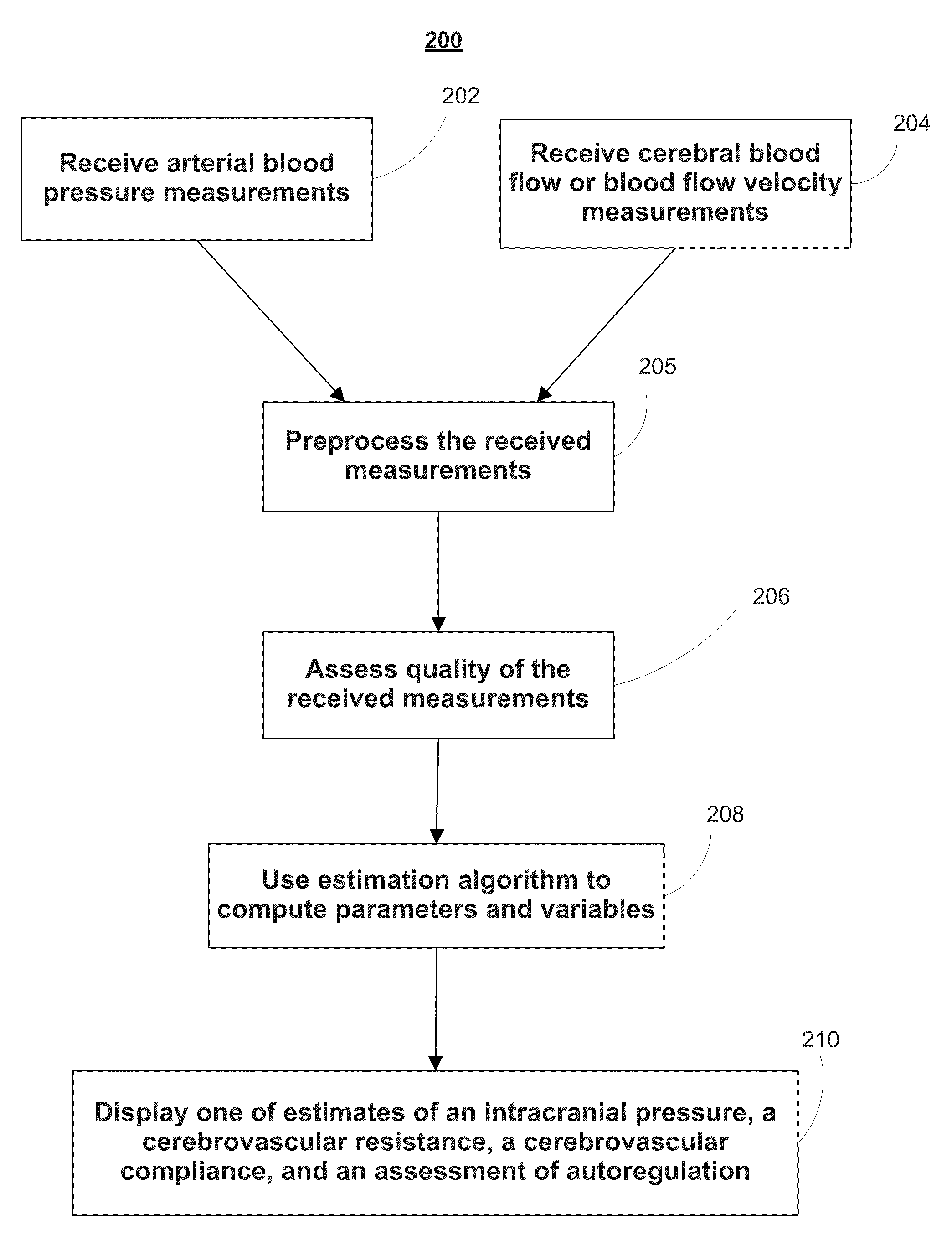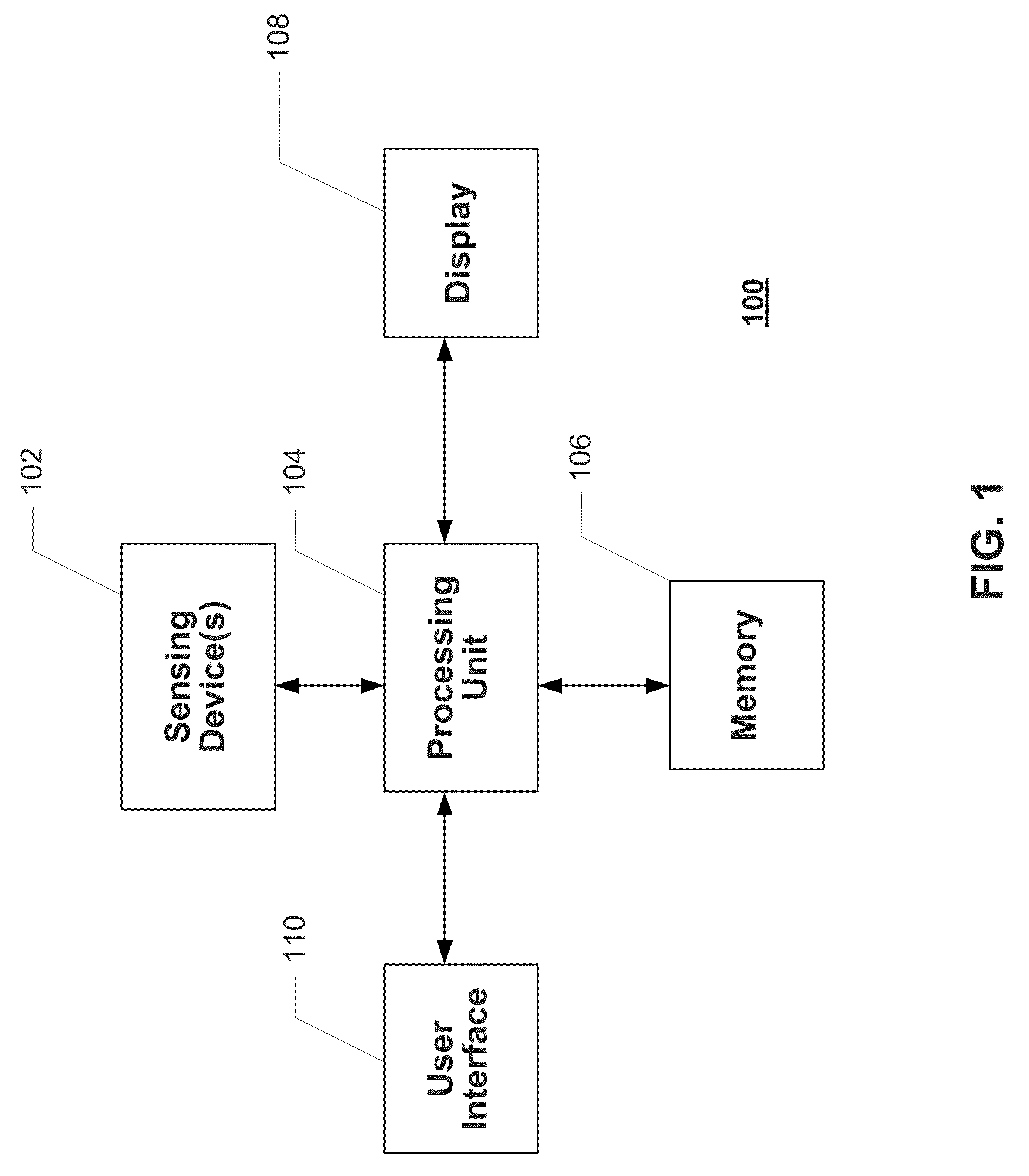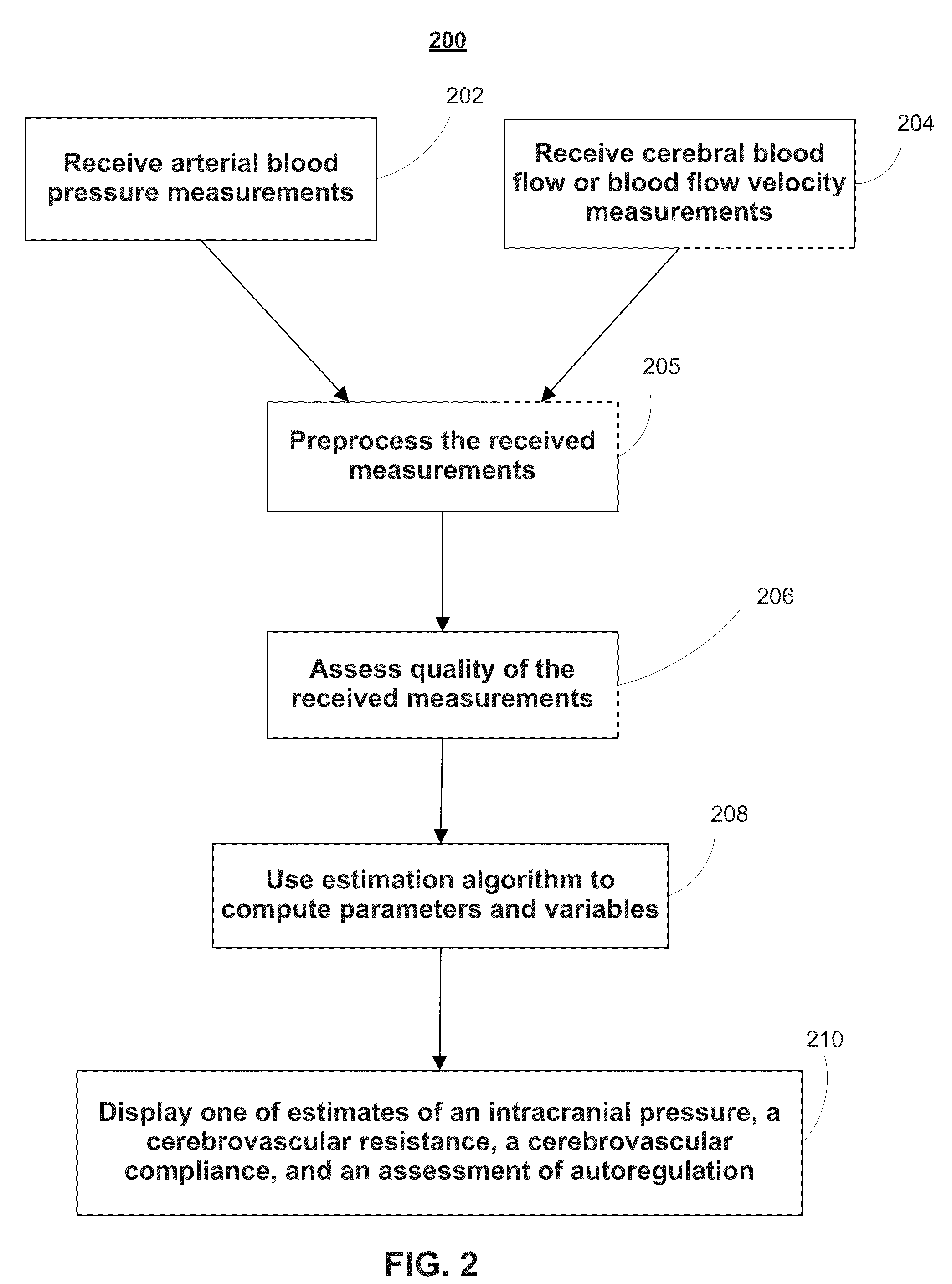Systems, devices and methods for noninvasive or minimally-invasive estimation of intracranial pressure and cerebrovascular autoregulation
a cerebrovascular parameter and autoregulation technology, applied in the field of systems, devices and methods for noninvasive or minimally-invasive estimation of cerebrovascular parameters and variables, can solve the problems of severe and often irreversible brain damage, unbalanced oxygen supply and demand of brain tissue, and impaired autoregulation ability
- Summary
- Abstract
- Description
- Claims
- Application Information
AI Technical Summary
Benefits of technology
Problems solved by technology
Method used
Image
Examples
Embodiment Construction
[0036]To provide an overall understanding of the invention, certain illustrative embodiments will now be described. However, it will be understood by one of ordinary skill in the art that the methods described herein may be adapted and modified as appropriate for the application being addressed, and that the systems, devices, and methods described herein may be employed in other suitable applications, and that such other additions and modifications will not depart from the scope hereof.
Introduction
[0037]Applicants' approach is based on using a computational model of the cerebrovascular and / or intracranial dynamics, in which the model parameters have physiological relevance. Over the past few decades, several such models have been proposed and studied in the literature [17-23]. Applicants have adapted the well-established model by Ursino and Lodi [20] by making necessary modifications to represent the pulsatile nature of the variables captured in the computational model. These modifi...
PUM
 Login to View More
Login to View More Abstract
Description
Claims
Application Information
 Login to View More
Login to View More - R&D
- Intellectual Property
- Life Sciences
- Materials
- Tech Scout
- Unparalleled Data Quality
- Higher Quality Content
- 60% Fewer Hallucinations
Browse by: Latest US Patents, China's latest patents, Technical Efficacy Thesaurus, Application Domain, Technology Topic, Popular Technical Reports.
© 2025 PatSnap. All rights reserved.Legal|Privacy policy|Modern Slavery Act Transparency Statement|Sitemap|About US| Contact US: help@patsnap.com



